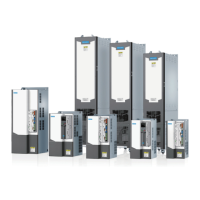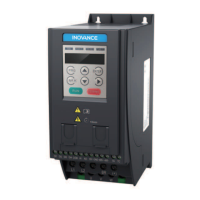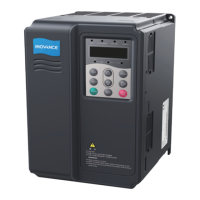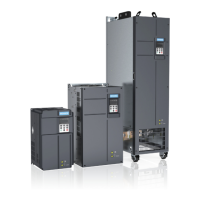Function Applications
-446-
Operation
Main Frequency
Reference Source
Auxiliary Frequency
Reference Source
Description
Single
frequency
source
Any Any
1. When digital setting is used, UP/DOWN is
inactive. The digital setting value is defined by F0-
08.
2. When PID exists, PID is invalid.
3. When simple PLC exists, simple PLC is invalid.
4. When both the main and auxiliary frequency
references are digital setting, the main frequency
reference is active, the auxiliary frequency
reference is inactive, and UP/DOWN is active.
Digital setting
-
1. UP/DOWN is valid.
2. Output range: Main frequency reference + UP/
DOWN.
3. UP/DOWN adjustment range: (Frequency upper
limit – Main frequency value) to (Frequency lower
limit – Main frequency value).
4. UP/DOWN cannot reverse the frequency
direction.
PID
-
1. The frequency lower limit is invalid.
2. The PID output range is defined by the PID
output frequency upper and lower limits.
3. When reverse rotation is prohibited and the
lower limit of PID output is a negative value, the
lower limit of PID output is 0.
Others
None
Para. No. Name
Default
Value Range
F0-05
Base value of range of
auxiliary frequency source
Y for superposition
0
0: Relative to the
maximum frequency
1: Relative to main
frequency reference
F0-06
Range of auxiliary
frequency source Y for
superposition
100% 0% to 150%
These two parameters are only valid in the main + auxiliary operation to limit the range of the auxiliary
frequency.
Para. No. Name
Default
Value Range
F0-27
Main frequency coefficient
10.00% 0.00% to 100.00%
F0-28
Auxiliary frequency
coefficient
10.00% 0.00% to 100.00%
These two parameters are only used in the main x auxiliary operation. Assume that the main frequency
is Frq1 and the auxiliary frequency is Frq2.
Frq = (Frq1 x F0-27) x (Frq2 x F0-28)

